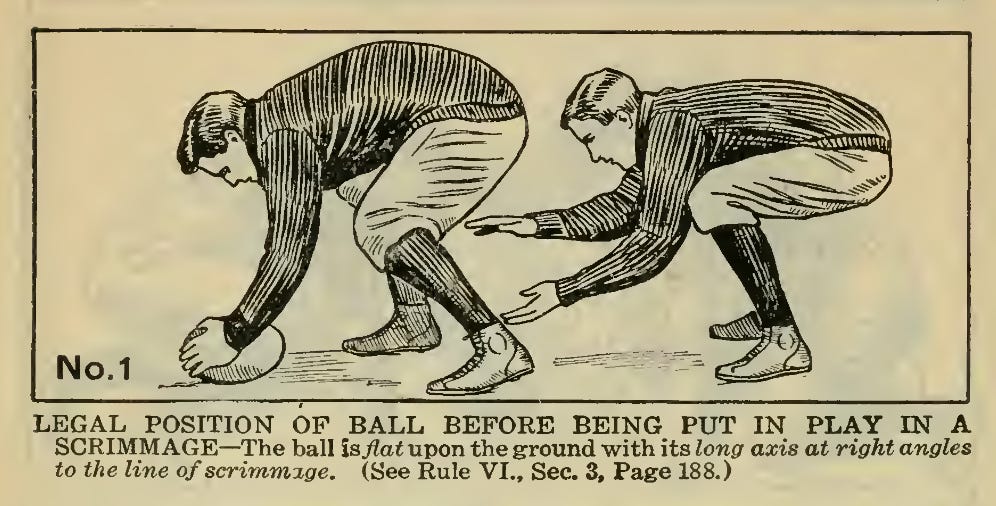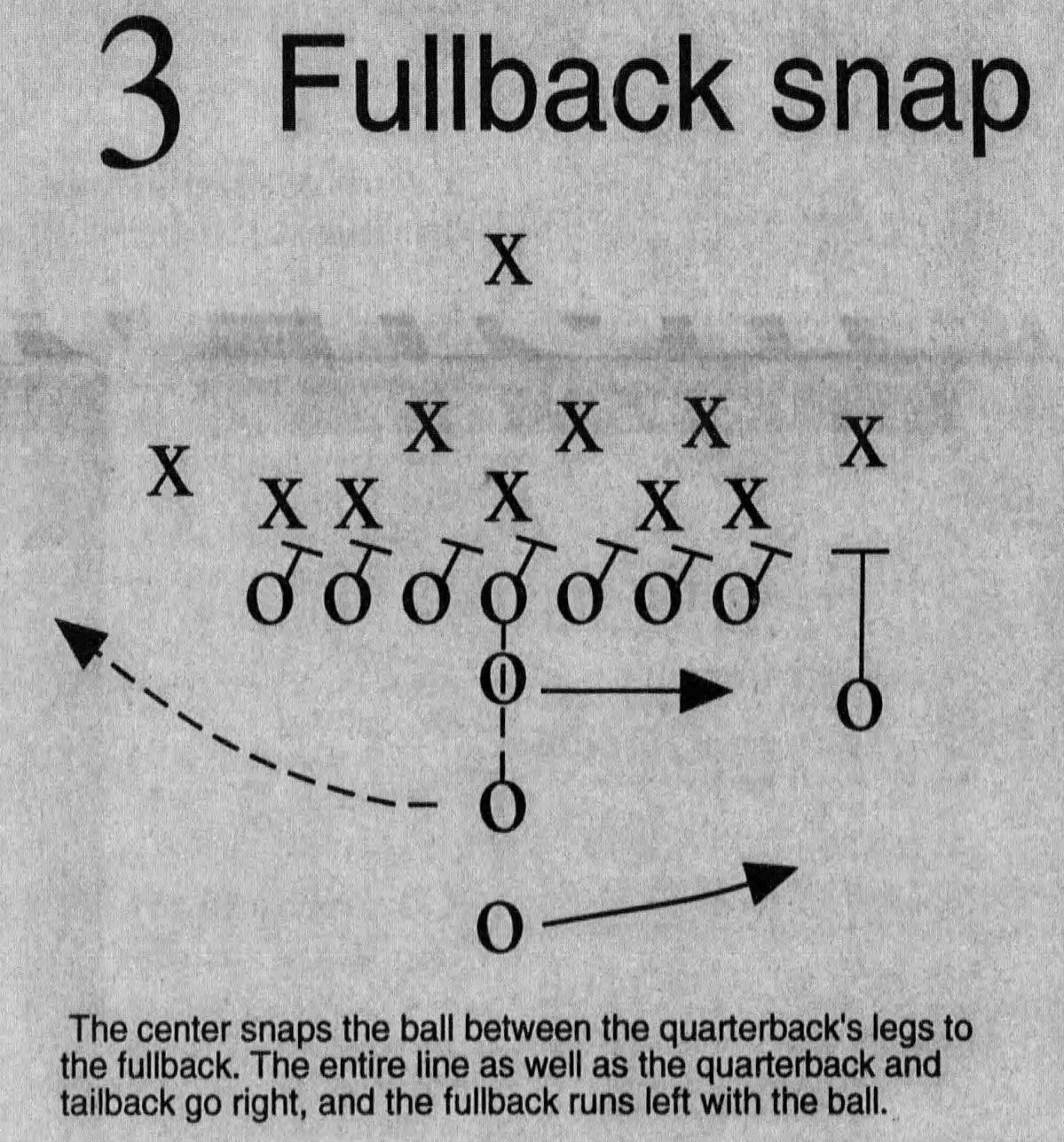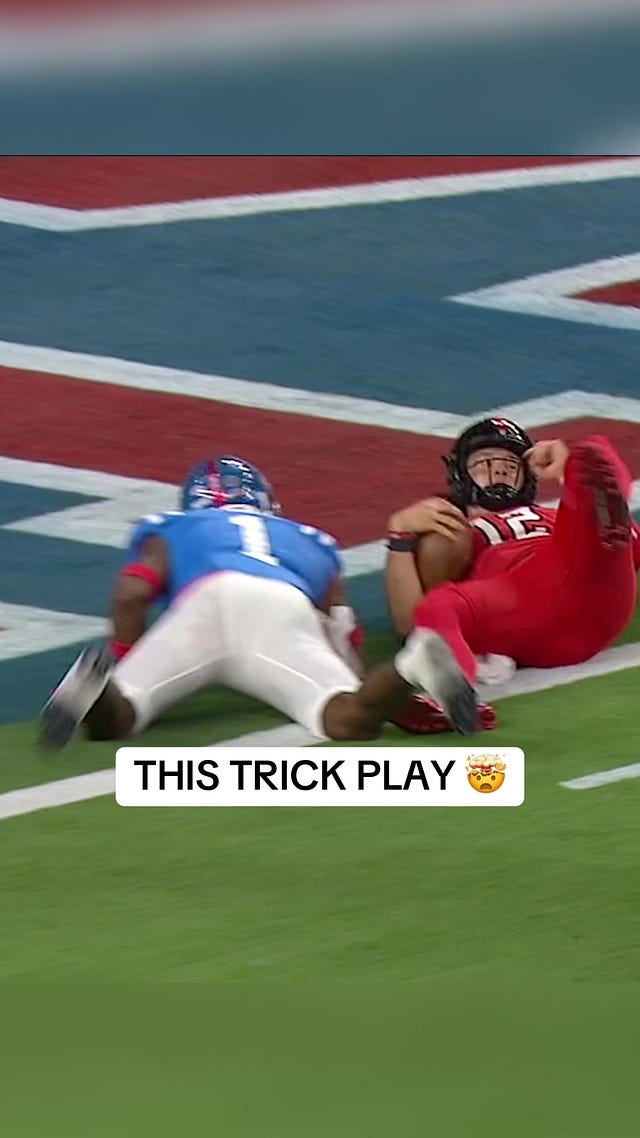Today's Tidbit... A Look Back At Snapping Between The Quarterback's Legs
Football has evolved and changed its rules over the years, perhaps more than any other sport. The need for so many changes likely results from football’s system of downs and its resulting structured play involving 22 or 24 players at a time. The combination has allowed players and coaches to regularly devise new tactics, some of which are deemed unsafe, unsportsmanlike, or just unappealing, so rules are made to discourage one thing and encourage another.
One tactic that has popped up from time to time involves the center snapping the ball between the quarterback's legs to another teammate in the backfield. It's a tactic that came into being when teams began putting the quarterback under center with the introduction of the Modern T formation in 1940. Early football had the quarterback take the snap while positioned immediately behind the center or to one side.
The desire to eliminate mass plays and the introduction of the forward pass led to rules requiring seven players on the line of scrimmage at the snap. To ensure officials and defenses were clear about which offensive players were on the line of scrimmage versus those in the backfield, the rules required those in the backfield to be at least one yard behind the line of scrimmage.
From the early 1880s through 1909, the player receiving the snap either could not run with the ball or was restricted in his ability to run it, but that went away in 1910, leading to centers snapping directly to the runner. The Single Wing, Notre Dame Box, and similar offenses became popular following that rule change.
Fast forward to 1940 and the Modern T with the quarterback standing directly behind the center, placing his hands under the center's derriere. Almost immediately, coaches saw an opportunity for a bit of trickeration. Texas Tech reportedly snapped the ball between the quarterback's legs in 1941, and Boston College did so in 1942, direct snapping the ball to their T formation fullback.
Arguments ensued over the play's legality since, by then, the rules required the quarterback to be at least one yard behind the line of scrimmage for another player to receive the snap legally. In effect, the quarterback could not have his hands under center if another player received the snap.
In 1946, Dana X. Bible, then the coach at Texas and a Rules Committee member, thought it would be fun and encourage creativity among coaches if the rules changed to allow snapping the ball between the quarterback's legs. He succeeded in getting the rule passed, so over the next decade, a variety of college teams did the old snapperooski in one of three basic forms.
First, teams snapped between the legs to quick kick or to give the quarterback the option on fourth and short to sneak it or opt for the punt. Barry Switzer centered the 1955 Arkansas team that used this tactic with fullback Gerald Nesbitt, one of the nation's leading punters. This version also saw use at many high schools. Here's a video on Twitter of Georgia Tech doing so in the 1950s.
Second, teams connected the snap between the legs with some form of fullback spinner or Single Wing misdirection. Notre Dame, NC State, and others used this approach in the mid-1950s. This approach popped up at various high schools over the years among coaches who prefer unconventional offenses to make themselves difficult to prepare for. I couldn't find video examples of the spinner, so comment below if you have links to examples.
Third, teams snapped the ball to the fullback, or in recent years, the single back, who ran it up the gut, swept wide, or passed the ball. Teams commonly employed these plays in red zone situations.
As with other plays involving snapping between the quarterback's legs, it was primarily seen in high school play, but the colleges and the NFL have embraced it in recent years. Here's Texas running a version of the snap between the legs with Arch Manning under center.
Ole Miss adapted the play and ran it from shotgun in 2024 (on TikTok).
And then there was Oregon State snapping between the legs and passing the ball in 2020.
It is worthing noting that the NFL required the snap go to the quarterback through the 2007 season. That season, the Bears bungled a regular snap that went through their quarterback's legs, and the Eagles recovered the ball. However, referee Ed Hochuli correctly whistled the play dead and penalized the Bears for an illegal snap. The following spring, the NFL owners eliminated that rule, so snapping between the legs became legal.
The Detroit Lions ran a fun version of the play last year as well. (Skip to 2:40 to see the play.)
So, tactics and rules interacted to create plays in the 1940s and 1950s before being relegated to unconventional high school offenses. Those plays are now reappearing, and we treat them as displays of imaginative play calling at the major college and NFL levels. That's fine; I hope we see more of them, as they're not only surprising and fun but also bring back an element of the game that's over 80 years old.
Search Function: This is the 1,300th Tidbit, podcast, or page on Football Archaeology. If you are looking for information on specific topics, people, or teams related to the history of the game, click on the search function (magnifying glass) atop the page and enter your keywords. You’ll receive a list of stories that include the terms you entered.
Football Archaeology is reader-supported. Click here to buy one of my books, donate, or otherwise support the site.








One of your best articles ever. Thanks, as always!